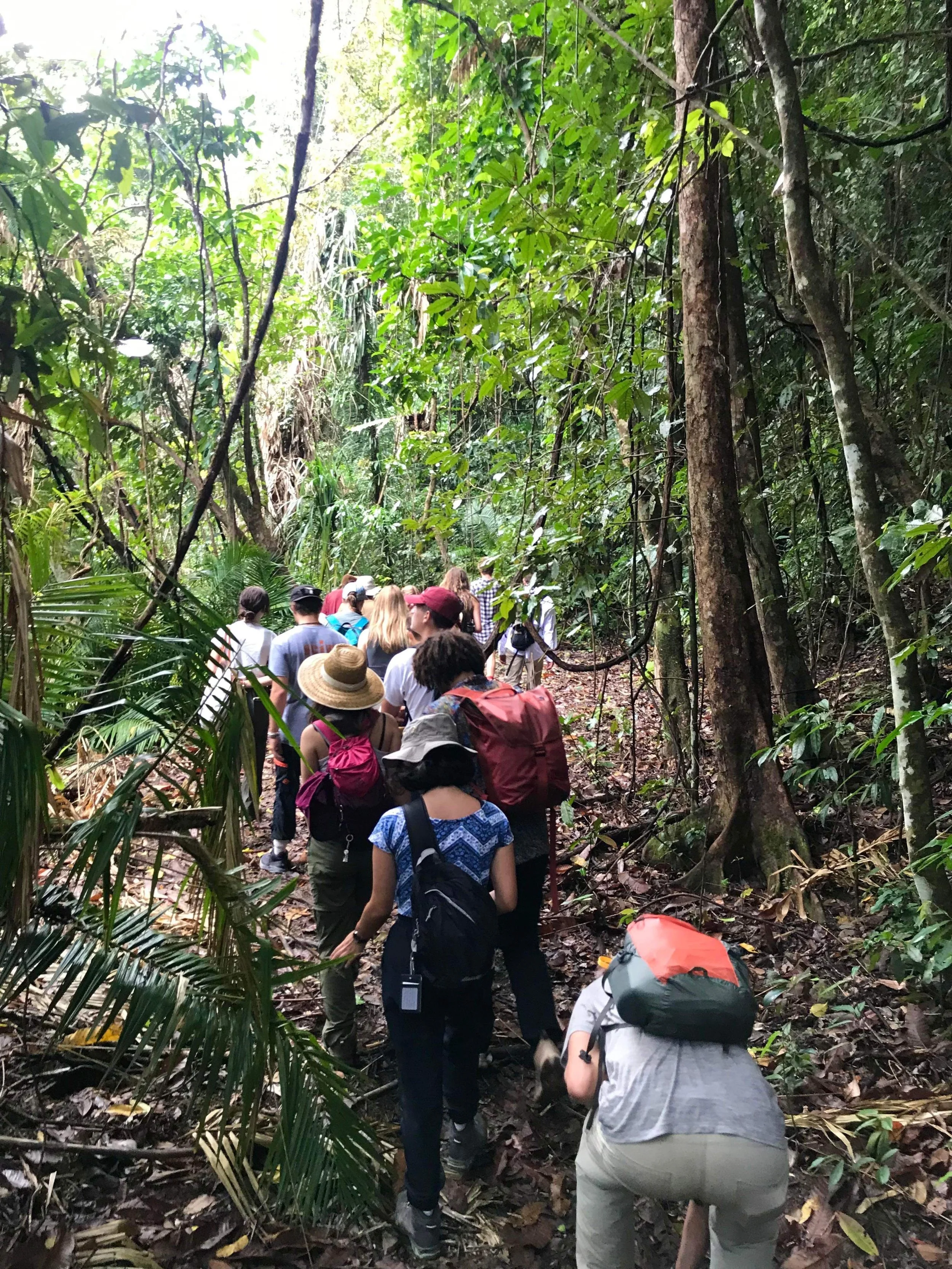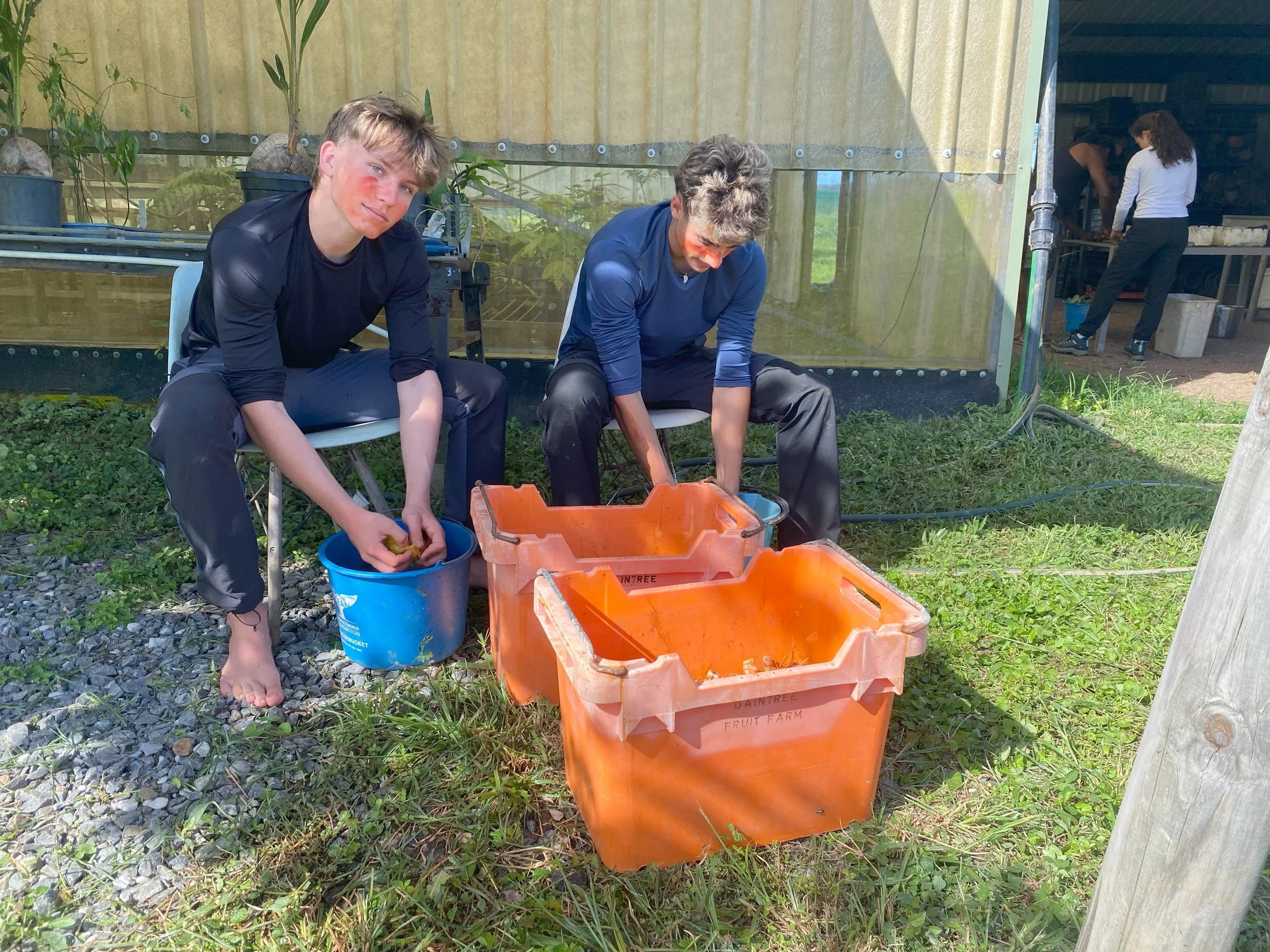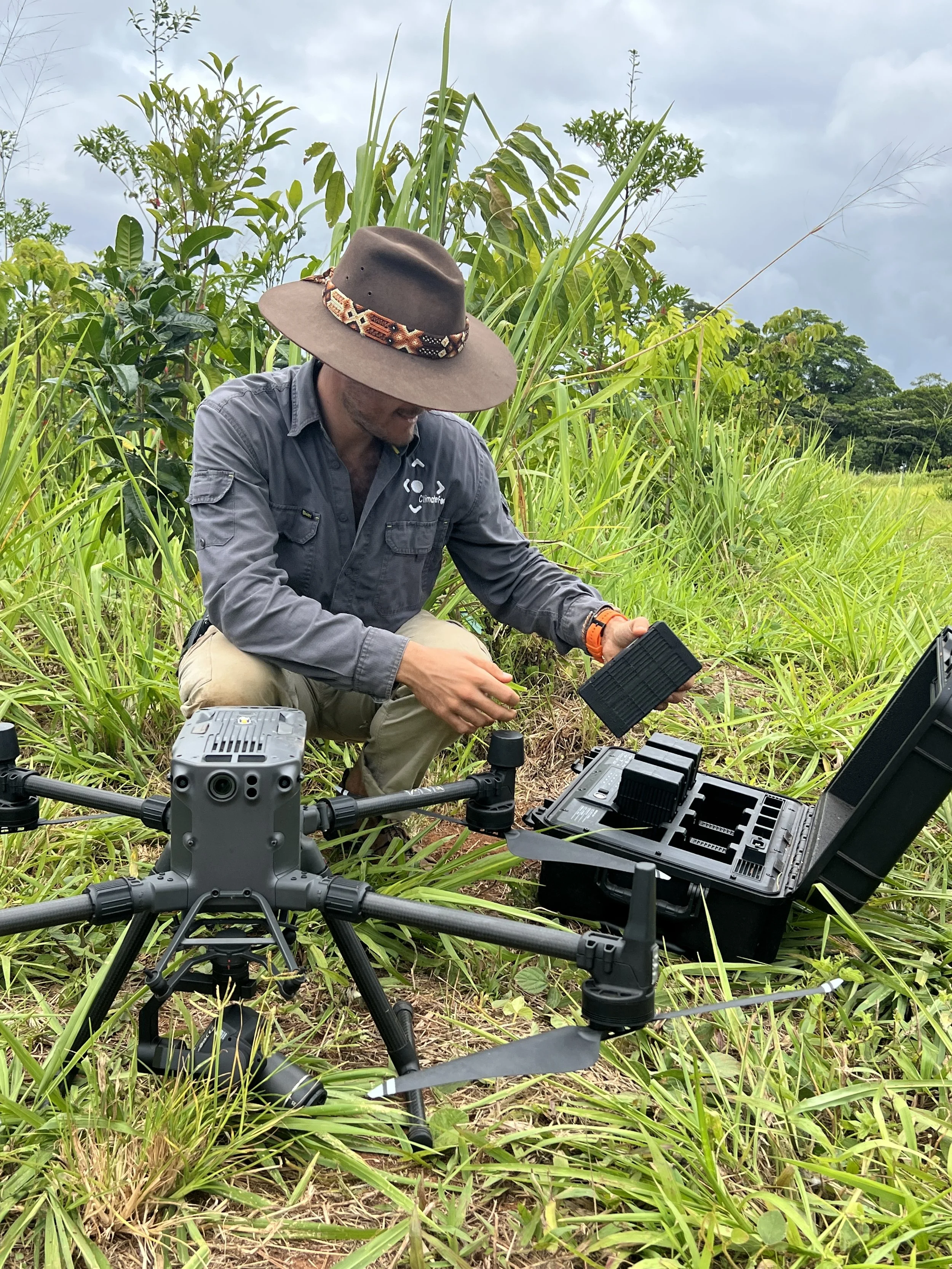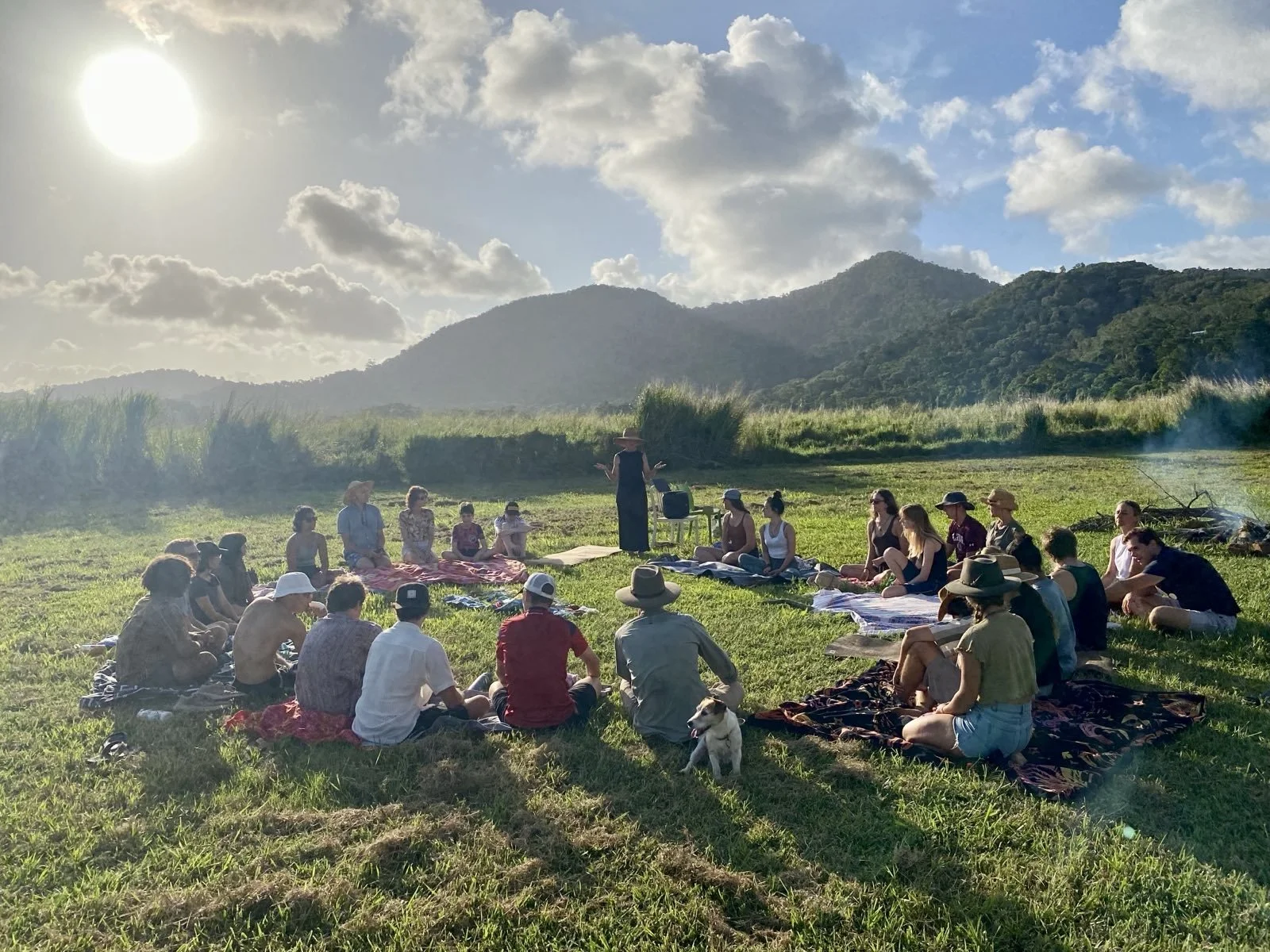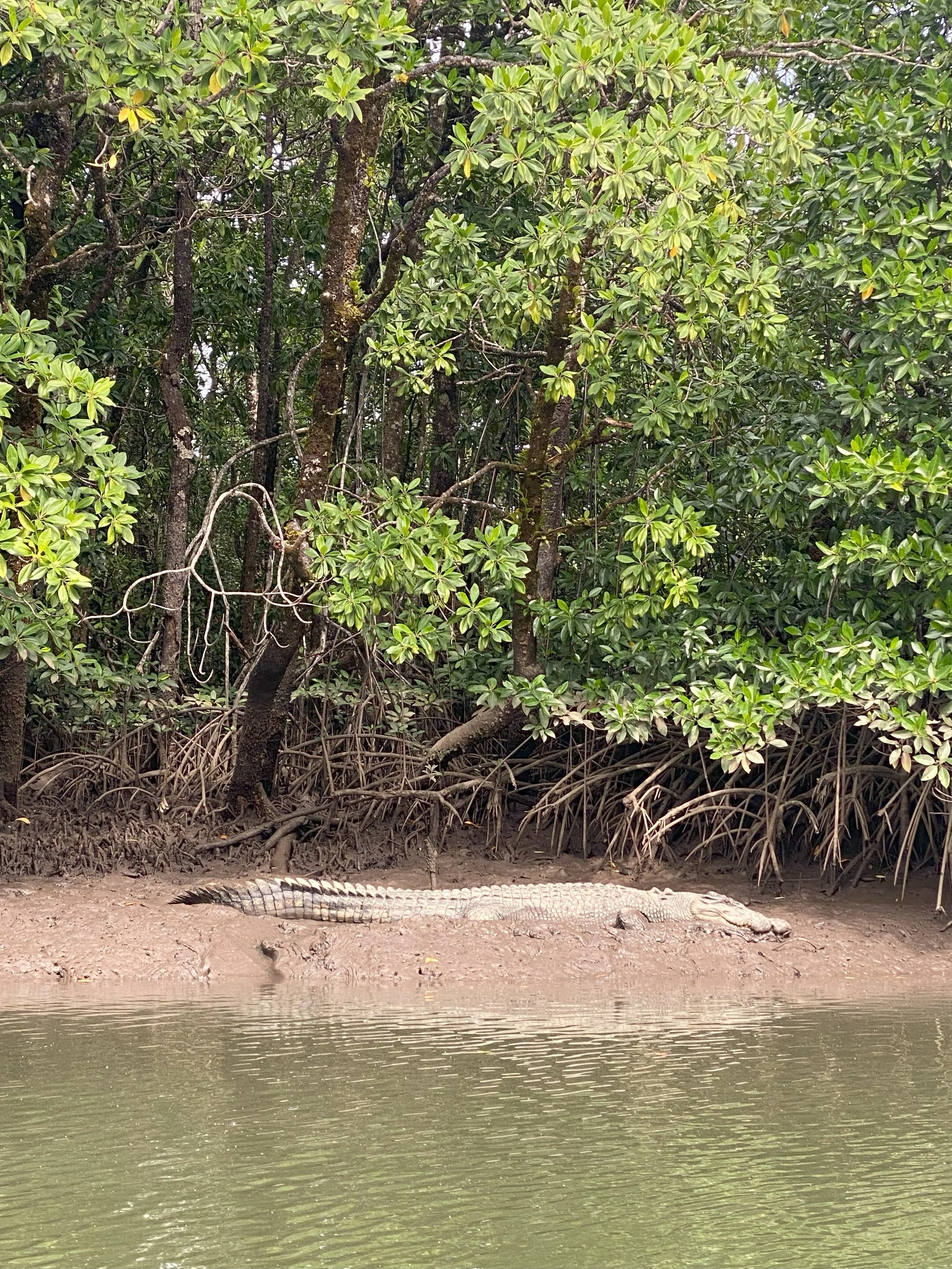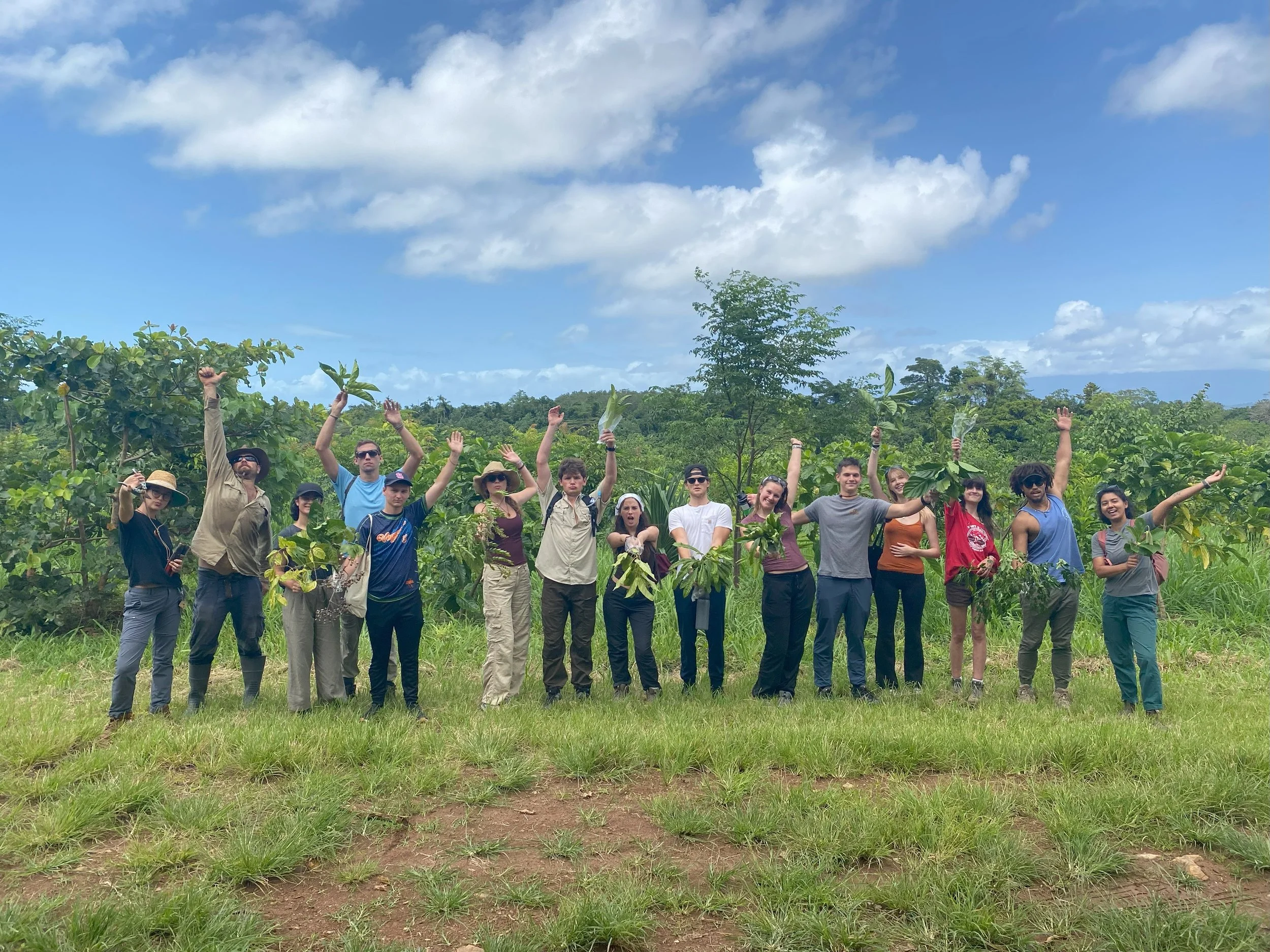Roots & Realisations: Inside the ClimateForce Educational Camps
There’s a moment, out here on the land, where something just clicks. It usually happens around dusk - the fires are crackling, the forest begins to hum, and there’s this quiet pause among the group. Mud still on boots. Minds still buzzing. A kind of reverent stillness. It might come after planting trees, after a powerful yarn with an elder, or simply while watching the morning mist lift over the mountain range. But whenever it arrives, it marks a transformation. Something shifts. A deeper kind of understanding takes root. At ClimateForce, we’ve come to love that moment - because it’s when education becomes embodied, when young people move from knowing about the environment to feeling inextricably connected to it.
That’s why we have created the ClimateForce Educational Camps - immersive, hands-in-the-soil, soul-sparking journeys into rainforest restoration and environmental leadership. These aren’t just a standard school trips, but a gateway to a more conscious, earth-centred way of seeing the world.
Each program brings students and young leaders into the living heart of the Daintree Rainforest - one of the oldest, most biodiverse ecosystems on Earth - and offers them a chance to participate in something real, grounded, and urgently needed.
Here’s what that experience looks like.
Starting from the Ground Up – A Welcome to Place
Before students plant a single tree, they’re invited to plant something else: connection.
Each ClimateForce camp begins with an invitation onto the land - a guided introduction to the facilities, the nursery, and our active reforestation zones. Students walk the same ground where thousands of native trees have already been planted, getting a feel for the space and the living systems they’re about to be part of.
As we move through the site, we share the story of ClimateForce - how it all began, the milestones reached, the lessons learned, and the vision that guides our work. It’s a time to reflect on what’s already been achieved, and what still needs doing.
The rainforest itself becomes part of the welcome, the towering trees, shifting light, and the distant calls of birds provide a sensory backdrop that says, this matters.
We also explore the unique ecological crossroads of Cape Kimberley, where rainforest, mangrove, and reef systems meet - helping students understand how climate, biodiversity, and place-based action are intertwined.
This isn’t just orientation. It’s grounding. It’s a first step into something real - where every conversation, every action, and every moment is part of a deeper, collective story of care, courage, and regeneration.
From Sweat to Systems – Experiencing Restoration First-hand
There are no lectures here. No standing on the sidelines. Just hands in the soil, sweat on brows, and the kind of satisfaction that only comes from doing something that matters.
Under the guidance of Tom - our Land Manager, tree-whisperer, and resident soil philosopher - students are thrown straight into the heart of ecosystem regeneration. This is where theory meets practice. And where practice often means a few small blisters, mud, and sun-kissed skin, depending on the season.
Tasks vary, but they’re always purposeful. Students dig holes in hard clay, rip through invasive guinea grass, nurture the planting rows, spread mulch, and water in seedlings - all while learning to read the landscape as a living system. Some days are bone-dry and scorching, with sweat soaking through shirts by morning break. Other days, the wet season turns the site to soup, boots sinking deep into earth as the rains drum overhead. Through it all, students come to understand one of the core truths of restoration work: the rainforest doesn’t follow a timetable. We adapt.
As they work, they begin to grasp the logic behind different techniques - why planting density shifts management requirements, how sun-tolerant pioneers create shade for slow growers, and how strategies change between wet and dry months. They learn about succession dynamics, how some trees lead the way while others patiently follow, and why a healthy forest begins long before you can see one.
Each action becomes part of something larger - a rhythm, a system, a living blueprint for regeneration.
Students walk through once-barren paddocks now pulsing with life. They hear wallabies dart through undergrowth. They spot fungi threading through mulch, and insects returning to claim their niche. And with each shovel of soil, they see restoration not as a romantic idea, but as a real, physical, slow, and sacred act of healing. Most importantly, they feel it in their bodies: this is what action looks like. This is what hope feels like. Because in a world full of climate headlines and eco-anxiety, putting your hands in the soil - and seeing something grow - might be the most empowering thing you can do.
Inside the Nursery – Learning to Nurture
There’s something quietly powerful about a nursery. No roaring machines. No grand gestures. Just rows of seedlings, gentle hands, and the steady rhythm of care.
Led by Liana - our Nursery Manager, greenhouse guardian and all-around carer - students step into a different pace of restoration. Here, the work isn’t about force. It’s about patience, precision, and a deep respect for life in its most vulnerable form.
They begin by learning the art of seed collection and processing - how to recognise when a fruit is ripe, how to extract and prepare seeds, and which ones need fire, smoke, soaking, or cold to germinate. There’s no one-size-fits-all here. Each species has its own needs, its own timing, its own way.
Then comes the tending. Students pot up seedlings they’ve collected, water trays by hand, clear away dead material, and carefully transfer young plants to bigger tubes as roots expand. Every movement is deliberate. Every action contributes to a tree that might live for centuries.
Some days are methodical - tagging batches of seedlings, updating growth records, shifting trays to catch the sunlight. Other days, it’s all hands on deck - a big transplant push before the rains, or a rescue mission after a bandicoot raid. Through it all, students learn that nurturing a forest starts with knowing its infancy. Over time, the trays stop looking like plants and start looking like potential. A Daintree Satinash destined to feed fruit doves. A native nutmeg that will one day shade a stream. A slow-growing cedar that won’t reach its peak in their lifetime - but will offer shade to someone else’s grandchildren.
This is where restoration gets personal, when you’ve raised something from seed - watered it, sheltered it, and given it space to grow - you don’t forget.
And that’s the lesson: real regeneration isn’t just about planting trees. It’s about tending futures. Carefully. Consistently. And with heart.
Ecological Economics – Why Restoration is Worth It
There’s something unexpectedly inspiring about a whiteboard in the rainforest.
No spreadsheets projected on walls. No suits. Just students in dusty boots, seated under a tin roof, listening as Barney - our founder, restoration economist, and big-picture thinker - connects the dots between ecology and economy.
He doesn’t sugar-coat it. Restoring rainforests takes money. Time. Planning. And long-term commitment. But it also opens doors - to new livelihoods, smarter systems, and a different kind of value creation. Students begin with the basics. What does it cost to restore a hectare of lowland tropical rainforest? What are the variables? How do labour, mulch, species selection, monitoring, and maintenance all add up? Then come the opportunities. They explore how carbon markets, biodiversity credits, eco-tourism, and regenerative agriculture feed into a growing restoration economy. They question who benefits, who’s left out, and how we make these systems fair.
Some days are numbers-focused - breaking down budgets, modelling scenarios, debating trade-offs. Other days shift to vision-building - how green infrastructure, ethical supply chains, and Indigenous land stewardship can all sit at the centre of a better economy.
Through it all, something clicks: regeneration isn’t just good for the planet. It’s a viable, evolving career path. And for students who’ve never seen themselves in conservation - who are drawn to business, law, finance, or innovation - this is often the pivot point. They walk away knowing that restoration needs analysts and architects as much as arborists and ecologists. That innovating new systems doesn’t always start with a shovel - sometimes, it starts with a spreadsheet.
And that being part of the solution? It isn’t years away. It’s right now.
Research & Technology – Measuring Change with Jack
Some classrooms have whiteboards. Ours has canopy.
Out in the field with Jack - our Research Director, resident drone pilot, and data detective - students don’t just learn science, they walk through it. The forest becomes their lab. Every tree, trail, and planting row holds a story, waiting to be revealed.
They start by flying drones over restoration zones, capturing high-resolution imagery and learning how to stitch it into orthomosaics and canopy height models. Jack shows them what it takes to geotag trees, measure growth, and monitor change not just with their eyes, but with pixels, coordinates, and code.
Then the questions begin. Which species are thriving? How does shade affect survival? What planting patterns lead to the fastest canopy closure? Students dig into the data, compare zones, and begin to see patterns emerge - living systems turning into measurable insights.
Some days are field-heavy - measuring trunk diameters, checking tags, syncing drone data. Other days, it’s laptops in the shade - analysing trends, visualising growth curves, and getting curious about outliers.
Throughout it all, one truth becomes clear: this is real science - applied, evolving, and essential. They’re not spectators here. They’re co-investigators. And when they realise the models they’re building could help shape the next generations of rainforest recovery - the future of how we do restoration across the tropics - it hits different.
Evenings by the Fire – Listening, Learning, Belonging
Some lessons don’t come from books or tools. They come from silence, story, and the flicker of firelight. As the sun dips and the forest quiets, students gather in a circle - not for an activity, but for something older and deeper. Yarning circles begin.
Facilitated by local Aboriginal elders and knowledge holders, these evenings are not performances. They are moments of truth. Ceremony. Spaces where stories are passed down, not just to be heard, but to be felt. Students listen to stories tied to the land they have been walking and living upon. They hear about seasons, songlines, and the deep relational responsibility embedded in Country. They ask hard questions - about colonisation, land rights, loss, and healing.
And they receive answers that don’t come in bullet points, but in lived experience, laughter, and sometimes, quiet tears. Some nights, it’s heavy. Other nights, it’s joyful. Always, it’s human.
For many, it’s the first time they’ve sat still long enough to truly listen. To recognise that this work - this planting, this caring - is part of a much older continuum. And that to regenerate land, we must also re-weave culture, honour story, and build relationships rooted in respect.
By firelight, education softens. It becomes something we carry - not just in our heads, but in our hearts.
Earth-Centred Youth Leadership in the Making
Not all learning happens on the land. Some of it comes from the water. From movement. From awe.
During the camp, students head out beyond the planting rows and nursery. They drift along the creek with local legends, through mangrove estuaries on crocodile cruises, learning about tidal systems, salt-tolerant species, and apex predators that have outlived the dinosaurs. It’s wild, raw, and unforgettable.
They also walk through Mossman Gorge - crystalline rivers, ancient granite boulders, and towering rainforest that’s remained mostly untouched for millennia. It’s not a lecture on ecosystems. It’s a lived moment of reverence - a reminder of what’s still intact, and why it needs protection.
And then there’s the beach cleanups. Not glamorous. Not filtered. Just a group of young people with gloves, buckets, and purpose - combing the shoreline and watching how far plastic can travel.
These experiences round out the week - balancing the action with perspective. They offer students a chance to zoom out, to feel part of a bigger system, and to see how human choices ripple through land and sea.
But it’s what happens after they leave that really tells the story. Some find clarity. Others, confidence. All leave with a deeper knowing: they are not powerless. In a world weighed down by climate anxiety, these camps offer something rare and real - a sense of agency, belonging, and hope that can’t be unlearned.
Because once you’ve walked through rainforest, restored a clearing, floated past crocodiles, and stood barefoot in a sacred gorge - you begin to realise that leadership doesn’t start in policy rooms.
It starts here.
Want to Be a Part of This?
If you’re an educator, a student, a parent, or a program organiser - and you're looking for an authentic, transformative, regenerative learning experience, we’d love to hear from you.
Let’s support and nurture the next generation of Earth stewards - together.
If you’re interested to
- Book a youth camp or custom group experience
- Support a scholarship for under-resourced students
enquire at:
support@climateforce.au


